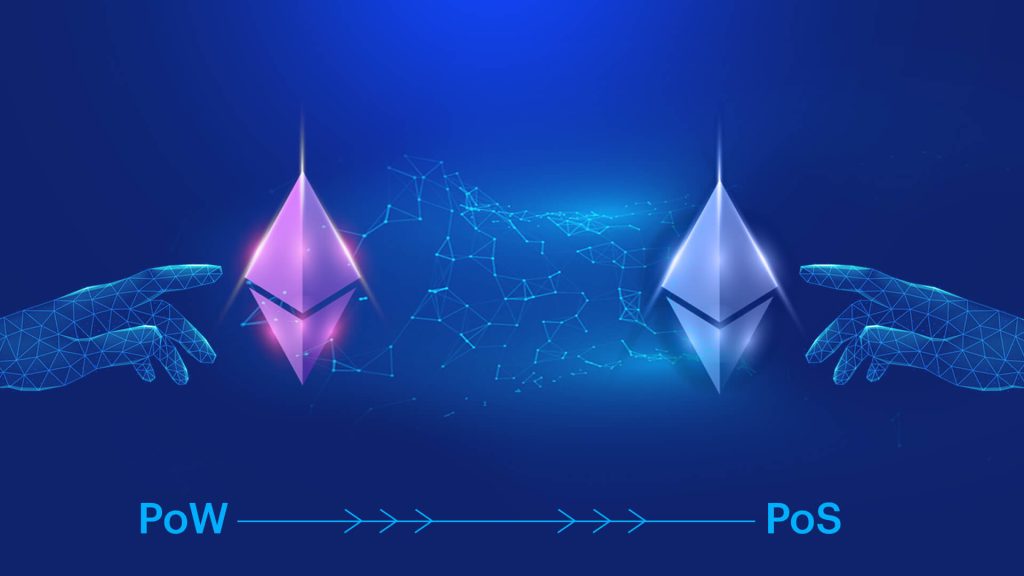Ethereum is one of the most popular cryptocurrencies. It has been around for a while but has seen massive growth in 2017. Whether you’re just getting acquainted with it or are a seasoned pro, there’s a lot you probably don’t know about it. To help clear up some common misconceptions, we will go over what Ethereum 2.0 is, why it matters, and the potential implications it might have on the ecosystem.
What is Ethereum?
Ethereum is a decentralized network where anyone can create their own digital assets and trade them with anybody else. Ethereum is also a platform that developers can use to create decentralized applications (DApps) and smart contracts. Ethereum enables developers to build DApps on top of its blockchain technology. Since those DApps are developed on top of blockchain technology, these DApps are not controlled by any centralized party and have no single point of failure. The most popular example of an Ethereum DApp is CryptoKitties, which allows players to buy, sell, and breed digital cats. 1
Ethereum 2.0
Ethereum 2.0 is often referred to as “the next layer.” In other words, it’s the next iteration of Ethereum, a system that adds new features and capabilities. Ethereum 2.0 is launching in several phases. These phases are designed to gradually introduce new features and increase the scalability of the Ethereum 2.0 network. Ultimately, Ethereum 2.0 will introduce Sharding, which will allow for increased transaction throughput and a more robust consensus protocol that will allow for faster block times.
The Beacon Chain:
The Beacon Chain was the name of the original proof-of-stake blockchain that was launched in 2020. The Beacon Chain is a scalable, lightweight, low-latency proof of stake (PoS) blockchain.
- The Beacon Chain introduced proof-of-stake to the Ethereum ecosystem.
- The Beacon Chain shipped on December 1, 2020. It was merged with the original Ethereum proof-of-work chain in September 2022.
- The Beacon Chain introduced the consensus logic and block gossip protocol, which now secures Ethereum.
The Beacon Chain is a critical component of Casper and is responsible for managing the game theoretic aspects of Ethereum’s consensus protocol. It maintains a list of validator nodes and their public keys and tracks all deposits and withdrawals from validators’ accounts. The Beacon Chain also manages the process of adding new blocks to the blockchain by selecting validators to create them. Therefore, it ran alongside the original proof-of-work Ethereum until the Merge was completed.
With the recent release of Casper, Ethereum has begun to implement a proof-of-stake algorithm. The switch from proof-of-work to proof-of-stake on Ethereum required instructing the Beacon Chain to accept transactions from the new chain. 2
The Merge
The Merge is the name of the Ethereum update that will move Ethereum from a proof-of-work (PoW) security system to a proof-of-stake (PoS) security system.

- Ethereum Mainnet uses proof-of-stake, but this wasn’t always the case.
- The upgrade from the original proof-of-work mechanism to proof-of-stake was called The Merge.
- The Merge refers to the original Ethereum Mainnet merging with a separate proof-of-stake blockchain called the Beacon Chain, now existing as one chain.
- The Merge was executed on September 15, 2022. This completed Ethereum’s transition to proof-of-stake consensus, officially deprecating proof-of-work and reducing energy consumption by ~99.95%
The Merge is an update for the Ethereum Mainnet that will move it from PoW to PoS. This means that miners will be replaced by validators staking their Ether to validate blocks and create new ones. The miners’ reward for creating blocks will be changed from 3 ETH to 0.6 ETH, reducing ETH’s inflation rate and lowering transaction fees.
Sharding
While Ethereum has been the go-to blockchain for developers, it has not been without flaws. The most significant issue with Ethereum is the scalability problem.
Ethereum can only process up to 20 transactions per second, which is already too low for many applications, and its expected growth in use will make this worse. To solve this problem, Ethereum has started implementing Sharding which helps to divide the network into smaller parts called shards and process transactions in parallel on each shard.
Sharding is a multi-phase upgrade to improve Ethereum’s scalability and capacity. Sharding allows for the secure distribution of data storage requirements, lowering the cost of rollups and making nodes easier to manage. They enable layer two solutions to offer low transaction fees while leveraging the security of Ethereum. This upgrade has become more of a focus since Ethereum moved to proof-of-stake. Sharding could ship sometime in 2023. Shards will give Ethereum more capacity to store and access data but won’t be used for executing code.
Summary
Ethereum is the world’s second-largest cryptocurrency by market capitalization. It has been designed to be a decentralized platform for applications that run exactly as programmed without any possibility of downtime, censorship, fraud, or third-party interference. Ethereum can be used to structure, decentralize, secure, codify, and trade almost anything: voting, domain names, financial exchanges, and crowdfunding campaigns, to name a few applications.
The proof-of-work blockchain triggered the Merge on 15th September 2022. With the Merge, Ethereum will be able to scale better and faster. The upgrade is not a major change in the protocol, but it will significantly impact scalability.
This also means that it will become much easier from a hardware perspective to run an Ethereum node because far less data must be stored on a given machine.
Some of these capabilities include the ability to run new apps and services on the Ethereum network, a more advanced smart contract system, and a more efficient way of allocating computational resources on the network.
- Investopedia.com: https://www.investopedia.com/ethereum-2-0-6455959[↩]
- Ethereum.org: https://ethereum.org/en/roadmap/[↩]


